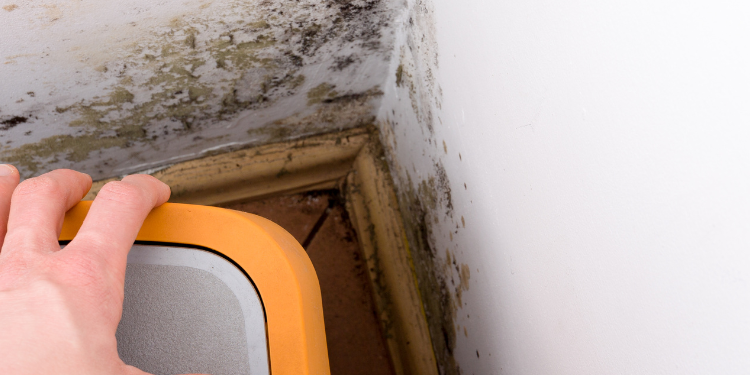In the warm and humid climate of Tampa Bay, concerns over indoor mold are not just seasonal—they’re persistent and deeply impactful. From homes near the Gulf to properties nestled inland, mold contamination quietly affects thousands of families each year. What many residents don’t realize is how profoundly this invisible threat influences the air we breathe indoors. Understanding the link between mold and indoor air quality is crucial for maintaining a healthy living environment, especially for vulnerable individuals like children, seniors, and those with respiratory issues.
Whether you’ve noticed musty odors, unexplained health symptoms, or visible discoloration on walls and ceilings, the signs of indoor mold growth should never be ignored. Tampa Bay Mold Testing offers expert inspections and solutions tailored to your needs, helping you take proactive steps toward healthier indoor air.
Key Takeaway: Mold growth in Tampa Bay homes is a significant contributor to poor indoor air quality, potentially affecting your family’s health and comfort. Proper testing, early detection, and professional evaluation are essential in creating a safe, breathable home environment.
How Mold Develops and Spreads Indoors
Moisture Sources in Tampa Bay Homes
The subtropical climate of Tampa Bay provides the perfect breeding ground for indoor mold. Daily temperature swings, seasonal storms, and elevated humidity levels allow moisture to infiltrate homes through roofs, foundations, or HVAC systems. Even minor condensation or plumbing leaks can create damp conditions ideal for mold growth behind walls or under floors.
Organic Materials as Fuel for Growth
Mold thrives on organic building materials like drywall, insulation, wood, and carpet. When moisture meets these surfaces, mold colonies can develop within 24 to 48 hours. Over time, the contamination spreads and deteriorates indoor air quality, releasing microscopic spores into the breathing space.
Airborne Spore Distribution
Once a colony is active, mold spores become airborne and circulate throughout the house via vents, fans, and airflow. These spores are often invisible and inhaled unknowingly, triggering allergic reactions, sinus infections, or respiratory irritation, particularly in those with asthma or weakened immune systems.
The Health Impact of Mold-Contaminated Indoor Air
Allergic Reactions and Respiratory Issues
Many Tampa Bay homeowners report persistent allergy symptoms without realizing mold is the root cause. Sneezing, coughing, watery eyes, and skin rashes may result from repeated exposure to airborne mold spores in homes lacking proper ventilation or moisture control.
Long-Term Exposure Risks
In cases of chronic exposure, especially where black mold is present, residents may experience more severe health effects such as neurological symptoms, fatigue, and difficulty concentrating. According to research on indoor mold, the consequences of long-term mold inhalation can be substantial, particularly for children and the elderly.
Aggravation of Existing Conditions
Those with pre-existing respiratory conditions like asthma or COPD often find that their symptoms worsen significantly in mold-contaminated environments. High spore concentrations aggravate bronchial inflammation and can lead to frequent flare-ups or hospital visits.
Indoor Air Quality Testing and Mold Detection
Importance of Professional Mold Testing
Because mold can grow in hidden areas such as inside walls or under floorboards, professional testing is critical. Trained inspectors like those at Tampa Bay Mold Testing use advanced air sampling and surface testing methods to accurately identify mold presence, even when it’s not visible.
Early Detection Saves on Repairs
Catching mold early helps avoid extensive structural damage. Home inspections that include mold testing reveal issues before they escalate, saving homeowners from costly future remediation and reconstruction expenses.
Indoor Air Monitoring Over Time
Regular indoor air quality testing ensures your home remains safe even after mold removal. It can also confirm that remediation efforts were successful and that spore counts have returned to normal levels, ensuring peace of mind for you and your family.
Mold Prevention Techniques for Healthier Indoor Air
Humidity Control and Ventilation
In a high-humidity area like Tampa Bay, keeping indoor moisture below 50% is vital. Use dehumidifiers, exhaust fans, and proper HVAC systems to regulate moisture and maintain airflow throughout the home.
Maintenance and Inspections
Routine maintenance plays a crucial role in mold prevention. Roof inspections, plumbing checks, and sealing windows and doors keep moisture from seeping in. An annual review from a licensed mold testing company can help catch potential problems early.
Mold-Resistant Materials and Repairs
When renovating or repairing, opt for mold-resistant drywall, paint, and insulation. These materials reduce the likelihood of mold development, especially in bathrooms, basements, or kitchens where moisture levels are naturally higher. Learn more about effective mold control methods to keep your home mold-free long-term.
Why Tampa Bay Mold Testing Is Your Local Mold Specialist
Local Knowledge and Experience
Our team understands the unique challenges of mold in the Tampa Bay region. With our deep roots in the community, we approach every inspection with the care and attention only a local expert can offer.
Certified, Thorough Inspections
We follow industry best practices and utilize cutting-edge testing equipment to deliver accurate, actionable results. Our comprehensive reports empower homeowners to make informed decisions about air quality and remediation needs.
Compassionate Service You Can Trust
At Tampa Bay Mold Testing, we know mold issues can feel overwhelming. That’s why we treat every client with compassion, providing clear communication, step-by-step guidance, and personalized recommendations that prioritize your family’s well-being.
Answering Common Questions
How do I know if there’s mold in my home if I can’t see it?
Mold often hides in unseen areas like wall cavities, beneath flooring, or inside HVAC ducts. Signs such as musty odors, persistent allergy symptoms, or recent water damage may indicate hidden mold. Professional testing is the only reliable way to confirm its presence.
Can mold affect my children’s health more than adults?
Yes, children are more susceptible to the effects of poor indoor air quality. Their immune systems and lungs are still developing, making them more vulnerable to allergic reactions, asthma, and other respiratory issues triggered by mold spores.
What should I do if I find mold in my bathroom or kitchen?
If the area is small, you can attempt cleaning with mold-safe products. However, for larger infestations or recurring issues, professional mold testing and remediation are recommended. Identifying the root cause of moisture is essential to prevent future growth.
Climate’s Role in Tampa Bay Mold Growth
The year-round humidity and storm activity in Tampa Bay create ideal mold-breeding conditions. Without adequate climate controls, condensation and excess moisture build-up can cause rapid fungal expansion within homes and businesses.
Mold’s Direct Impact on Breathing Quality
As mold spores accumulate in indoor air, they significantly reduce air purity. This invisible decline in air quality often leads to headaches, fatigue, respiratory discomfort, and worsened indoor allergies, especially in poorly ventilated spaces.
When to Call in the Experts
If you’re unsure whether your indoor air is safe or suspect mold might be present, it’s time to act. Don’t leave your family’s health to chance. Contact Tampa Bay Mold Testing for a thorough evaluation. With expert tools, local insight, and a caring team by your side, we’ll help restore your home’s indoor air quality and peace of mind.
Let Tampa Bay Mold Testing be your trusted partner in protecting your home and loved ones from the hidden dangers of indoor mold.







